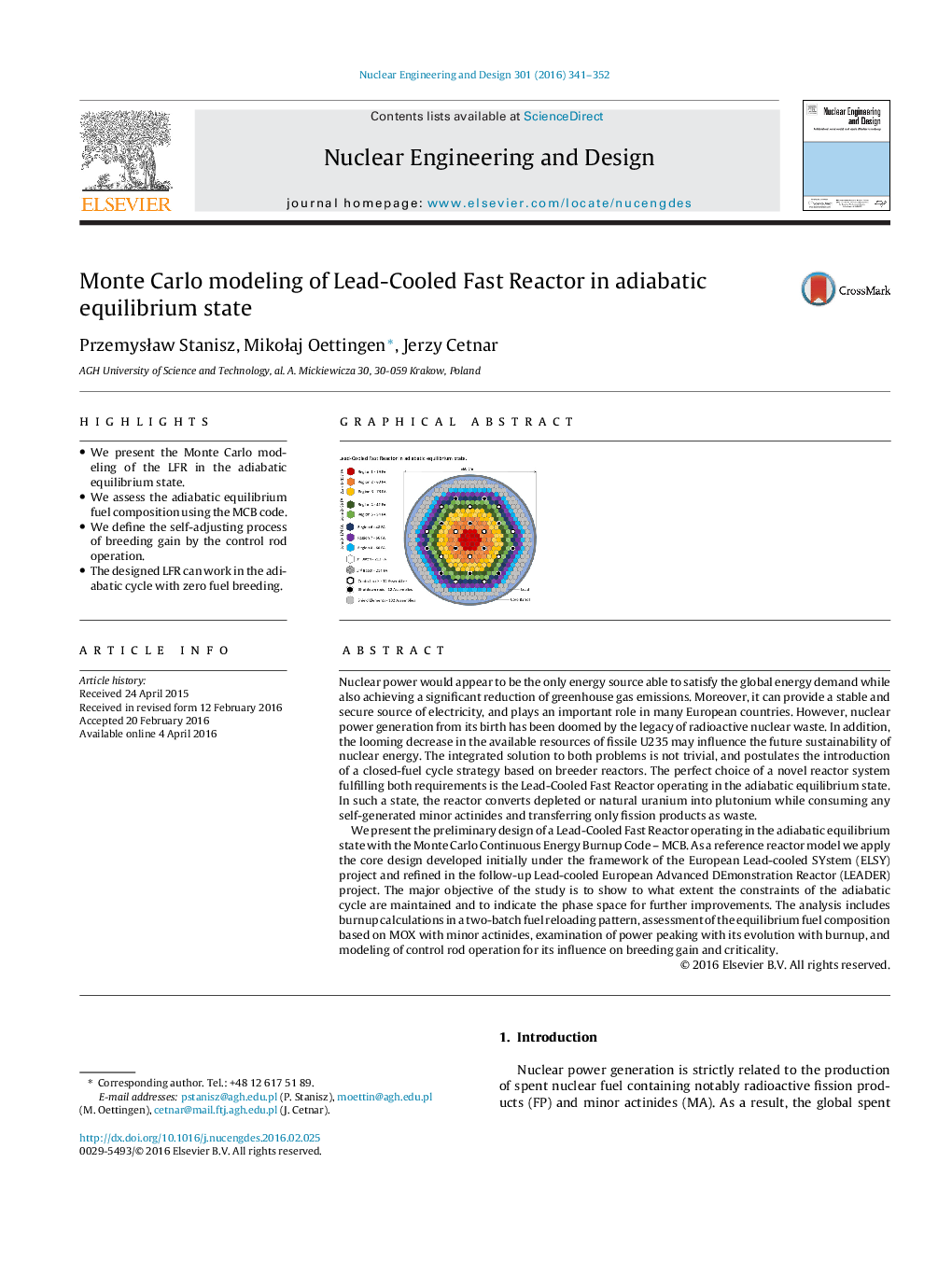| Article ID | Journal | Published Year | Pages | File Type |
|---|---|---|---|---|
| 295973 | Nuclear Engineering and Design | 2016 | 12 Pages |
•We present the Monte Carlo modeling of the LFR in the adiabatic equilibrium state.•We assess the adiabatic equilibrium fuel composition using the MCB code.•We define the self-adjusting process of breeding gain by the control rod operation.•The designed LFR can work in the adiabatic cycle with zero fuel breeding.
Nuclear power would appear to be the only energy source able to satisfy the global energy demand while also achieving a significant reduction of greenhouse gas emissions. Moreover, it can provide a stable and secure source of electricity, and plays an important role in many European countries. However, nuclear power generation from its birth has been doomed by the legacy of radioactive nuclear waste. In addition, the looming decrease in the available resources of fissile U235 may influence the future sustainability of nuclear energy. The integrated solution to both problems is not trivial, and postulates the introduction of a closed-fuel cycle strategy based on breeder reactors. The perfect choice of a novel reactor system fulfilling both requirements is the Lead-Cooled Fast Reactor operating in the adiabatic equilibrium state. In such a state, the reactor converts depleted or natural uranium into plutonium while consuming any self-generated minor actinides and transferring only fission products as waste.We present the preliminary design of a Lead-Cooled Fast Reactor operating in the adiabatic equilibrium state with the Monte Carlo Continuous Energy Burnup Code – MCB. As a reference reactor model we apply the core design developed initially under the framework of the European Lead-cooled SYstem (ELSY) project and refined in the follow-up Lead-cooled European Advanced DEmonstration Reactor (LEADER) project. The major objective of the study is to show to what extent the constraints of the adiabatic cycle are maintained and to indicate the phase space for further improvements. The analysis includes burnup calculations in a two-batch fuel reloading pattern, assessment of the equilibrium fuel composition based on MOX with minor actinides, examination of power peaking with its evolution with burnup, and modeling of control rod operation for its influence on breeding gain and criticality.
Graphical abstractFigure optionsDownload full-size imageDownload as PowerPoint slide
